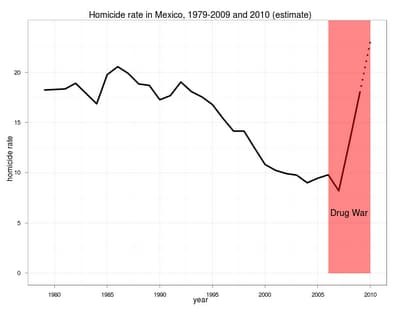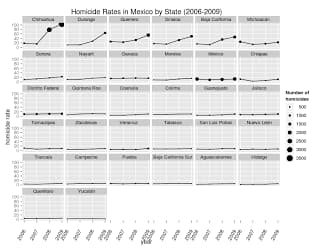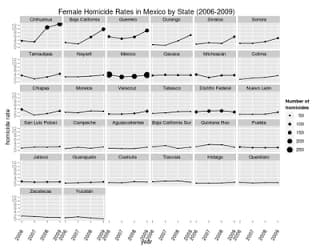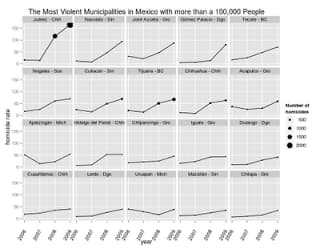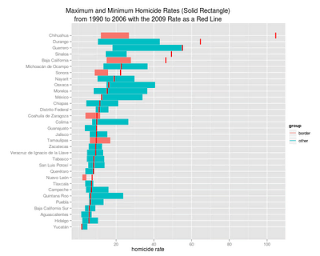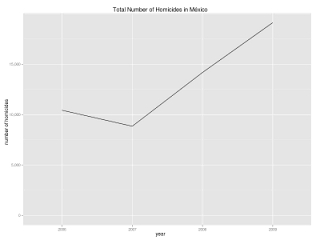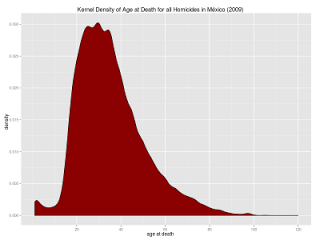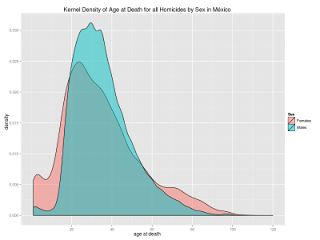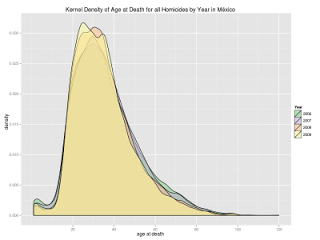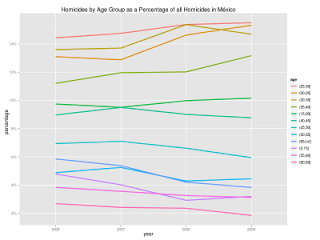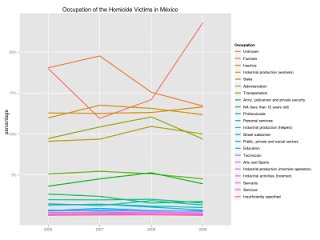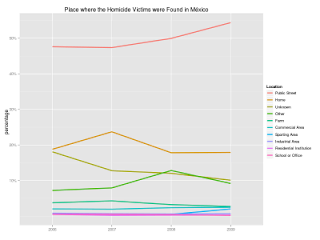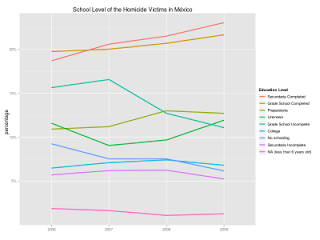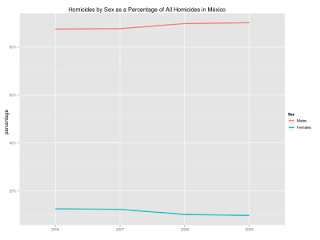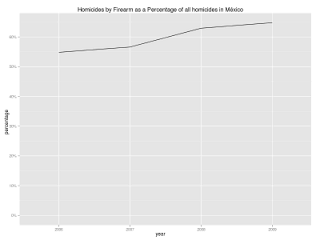Most of the increase has been because of the drug war, though as Mexico becomes more violent there has been a small rise in homicides not related to the drug war.
By State:
For females:
The most violent municipalities:
What stands out from the chart of the most violent municipalities for females is that Almoloya and Texcoco in the state of Mexico made the list (hint hint future gubernatorial candidates).
In this chart I show the maximum and minimum homicide rates from 1990 to 2006 (right before the drug war started) and compare it with the 2009 rate to put it in historical perspective:
Interestingly, the rate for Michoacán in spite of the drug war is nowhere near its maximum. The rate for 11 states is above or near their maximum from 1990 to 2006 and for 7 it is at or near their lowest rate (hint hint future presidential candidate).
The monthly totals:
The weekly totals:
Taking into account the undercount for the last year the totals would be:
2006 - 10,429
2007 - 8,843
2008 - 14,175
2009 ~ 19,900 (19,121 recorded in the database)
which assuming a population of 111 million (there were 112.3 million Mexicans in the 2010 census) would give a homicide rate of:
which is of course quite different from the 16,117 homicides according to police reports, and their corresponding rate of 15.
The mean age for homicide victims in 2009 was 34.6 with a sd of 14.3 years (it hasn’t changed significantly since 2006):
The increase in homicides since the drug war went charlie-foxtrot was especially acute among 18-40 years olds:
Homicide victims by age groups:
The proportion of homicides that occurred out in the streets keeps on increasing:
The educational attainment of homicide victims:
When violence increases it’s usally men who suffer the most, though according to newspaper stories there was a big increase in the proportion of women murdered in Ciudad Juárez in 2010, maybe the increase in the percentage of homicide victims who are men will stop next year?
The rate of increase in homicides commited with a firearm slowed down:
Right before midnigth is the most dangerous time in México:
(There was a mistake in the database, when the hour of death was unknow it was coded as having occurred at midnight, I discarded that value and used the average of the number of homicides between 11:00pm and 1:00am)
P.S. The code is at my GitHub
